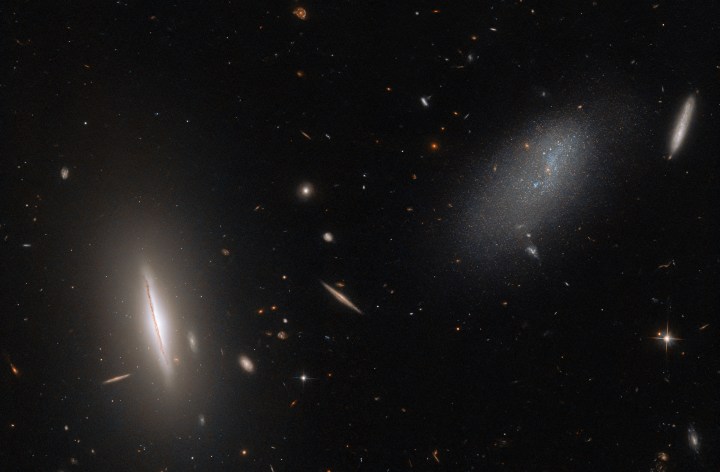
Every week, astronomers working with the Hubble Space Telescope share an image of space collected by the telescope. This week, the Hubble image is of a nearby galaxy called LEDA 48062, located just 30 million light-years away from our own galaxy — making it practically next door in cosmic terms.
The galaxy was observed as part of a project called Every Known Nearby Galaxy, which aims to use Hubble to study every galaxy within 10 megaparsecs (33 million light-years) of the Milky Way. “By getting to know our galactic neighbors, astronomers can determine what types of stars reside in various galaxies and also map out the local structure of the universe,” Hubble scientists write.

In this image, LEDA 48062 is the loose, fuzzy shape to the right of the frame. You can see many other galaxies in the image as well, including the clearly defined bar shape on the left — which is a lenticular galaxy called UGC 8603.
Galaxies come in three main types: spiral galaxies like our Milky Way, with a central bulge surrounded by a flat disk with arms reaching out in a spiral shape; elliptical galaxies, which are smooth and have an even distribution of light, making them appear like an ellipsis; and lenticular galaxies, which are halfway between these other two with a central bulge but no spiral structure.
There is also a fourth class of galaxy called irregular galaxies, which do not have a clear structure. These are often galaxies that started out as one of the three types above but were pulled into an irregular shape by the forces of gravity. This can happen when two galaxies are merging as their gravitational interactions can pull them into strange shapes.
Editors’ Recommendations



